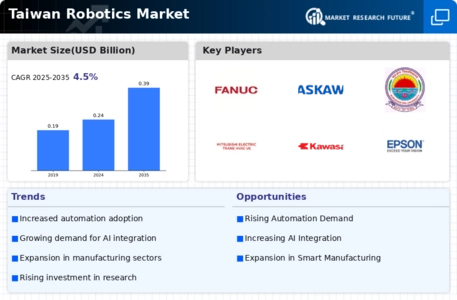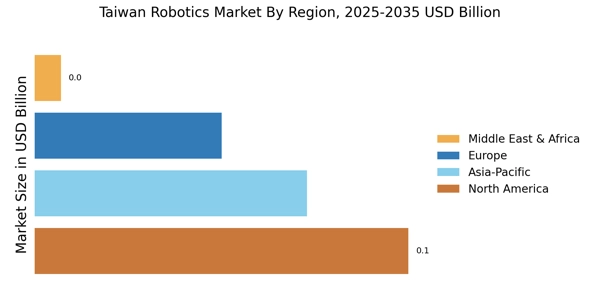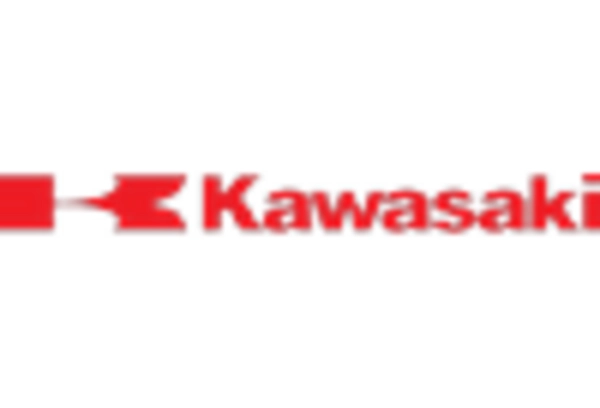Government Support and Initiatives
Government support plays a crucial role in the development of the Taiwan Robotics Market. Various initiatives aimed at promoting robotics research and development are being implemented, including funding programs and partnerships with academic institutions. The Taiwanese government has recognized the potential of robotics to drive economic growth and is actively investing in this sector. As of 2025, government-backed projects are expected to contribute significantly to the market's expansion, with an estimated increase in funding by 30% over the next few years. This support not only fosters innovation but also encourages collaboration between private enterprises and research institutions, thereby enhancing the overall competitiveness of the Taiwan Robotics Market.
Growing Interest in Service Robotics
The interest in service robotics is gaining momentum within the Taiwan Robotics Market. As consumer expectations evolve, there is a rising demand for robots that can assist in various service-oriented tasks, such as cleaning, hospitality, and healthcare. By 2025, the service robotics segment is anticipated to grow by approximately 25%, reflecting the increasing integration of robots in everyday life. This trend is driven by advancements in robotics technology, which enable machines to interact more effectively with humans. The growing acceptance of service robots in both residential and commercial settings suggests a promising future for the Taiwan Robotics Market, as businesses and consumers alike seek to enhance efficiency and convenience through robotic solutions.
Technological Advancements in Robotics
The Taiwan Robotics Market is experiencing a surge in technological advancements, particularly in artificial intelligence and machine learning. These innovations are enhancing the capabilities of robots, allowing for more sophisticated automation in various sectors. For instance, the integration of AI in robotics is enabling machines to perform complex tasks with greater efficiency and accuracy. As of 2025, the market is projected to grow at a compound annual growth rate of approximately 15%, driven by these technological improvements. Companies in Taiwan are increasingly investing in research and development to stay competitive, which further propels the growth of the robotics sector. This trend indicates a robust future for the Taiwan Robotics Market, as businesses seek to leverage cutting-edge technologies to optimize operations.
Rising Demand for Industrial Automation
The demand for industrial automation is a pivotal driver in the Taiwan Robotics Market. As manufacturers strive to enhance productivity and reduce operational costs, the adoption of robotic solutions is becoming more prevalent. In 2025, it is estimated that the industrial robotics segment will account for over 40% of the total market share in Taiwan. This shift towards automation is not only improving efficiency but also addressing labor shortages in various industries. The push for smart factories, characterized by interconnected systems and real-time data analytics, is further fueling this demand. Consequently, the Taiwan Robotics Market is likely to witness substantial growth as companies increasingly recognize the value of integrating robotics into their production processes.
Expansion of Robotics in Logistics and Supply Chain
The logistics and supply chain sectors are increasingly adopting robotics solutions, significantly impacting the Taiwan Robotics Market. With the rise of e-commerce and the need for efficient inventory management, companies are turning to automated systems to streamline operations. In 2025, it is projected that the logistics robotics market will grow by over 20%, driven by the need for faster and more accurate order fulfillment. Robotics applications such as automated guided vehicles and robotic picking systems are becoming commonplace in warehouses and distribution centers. This trend suggests that the Taiwan Robotics Market is poised for growth as businesses seek to enhance their supply chain efficiency through innovative robotic technologies.
















Leave a Comment